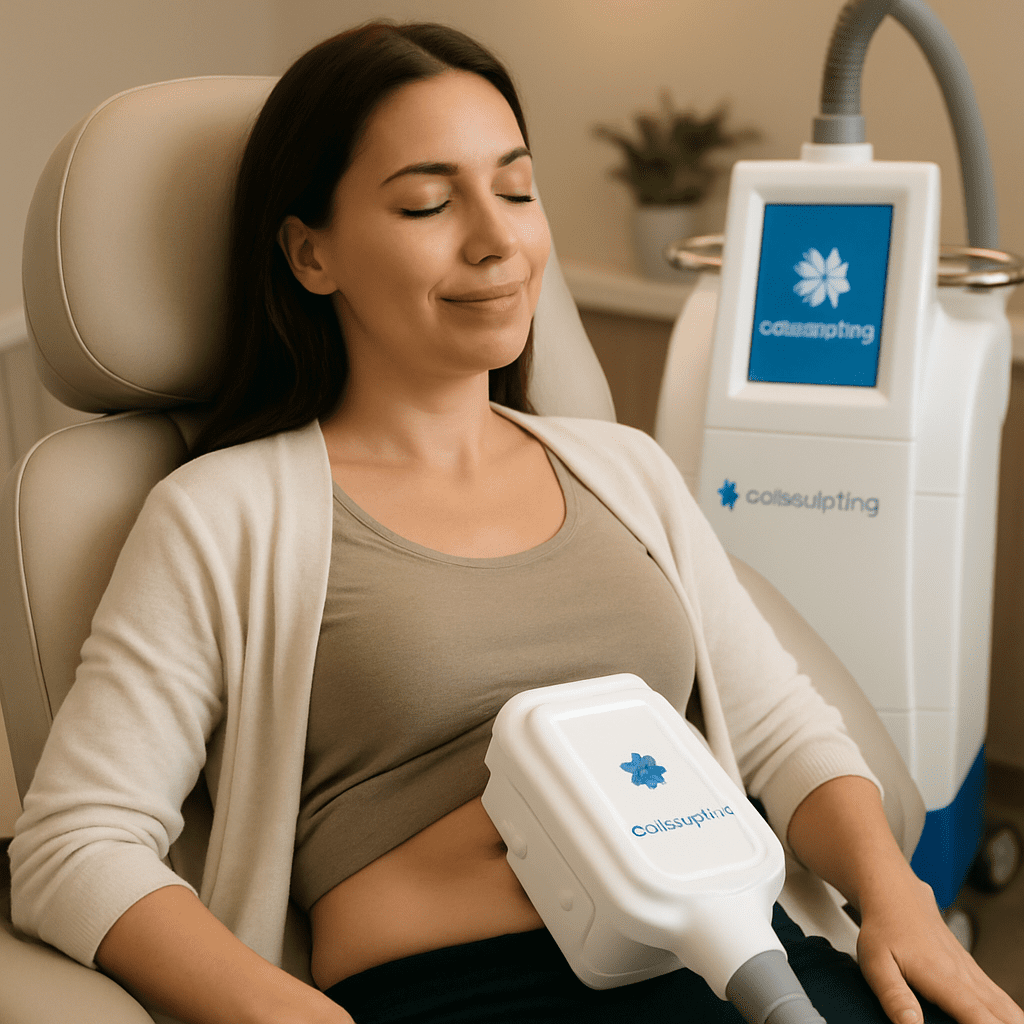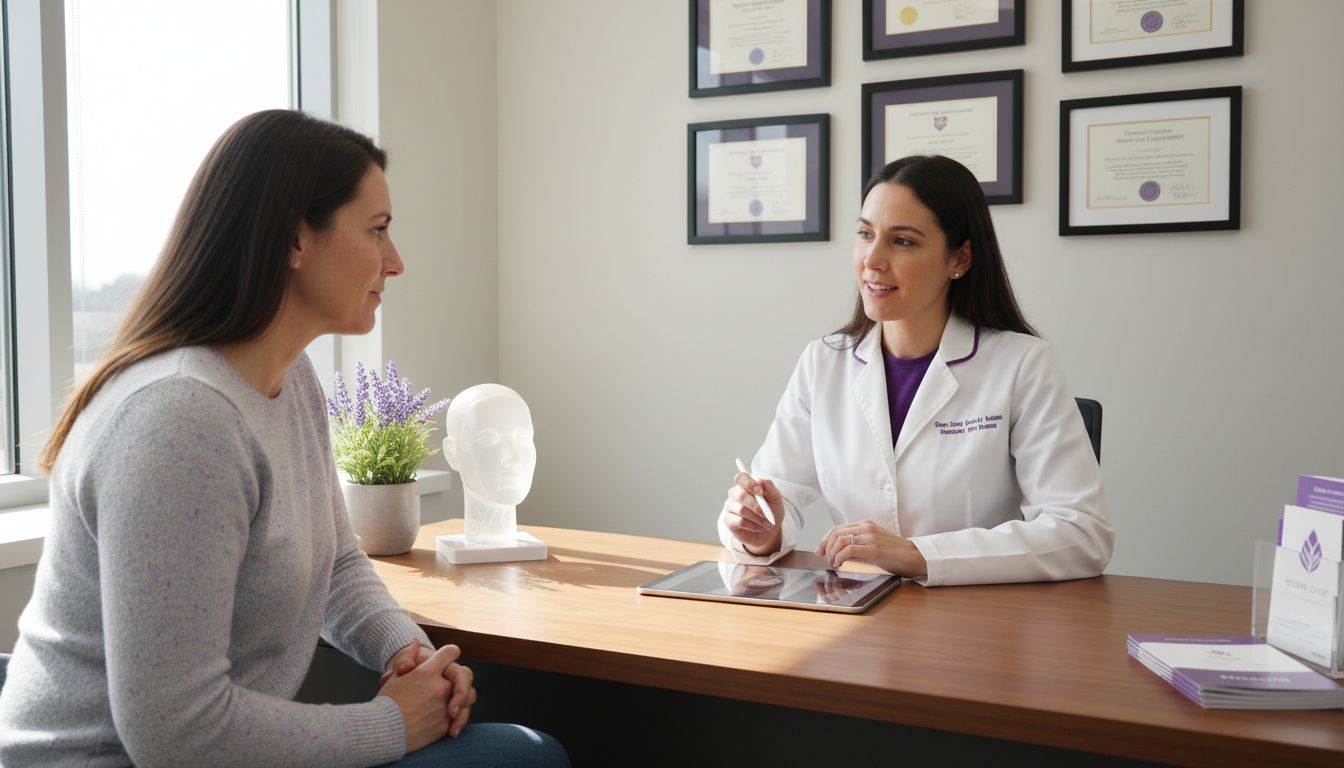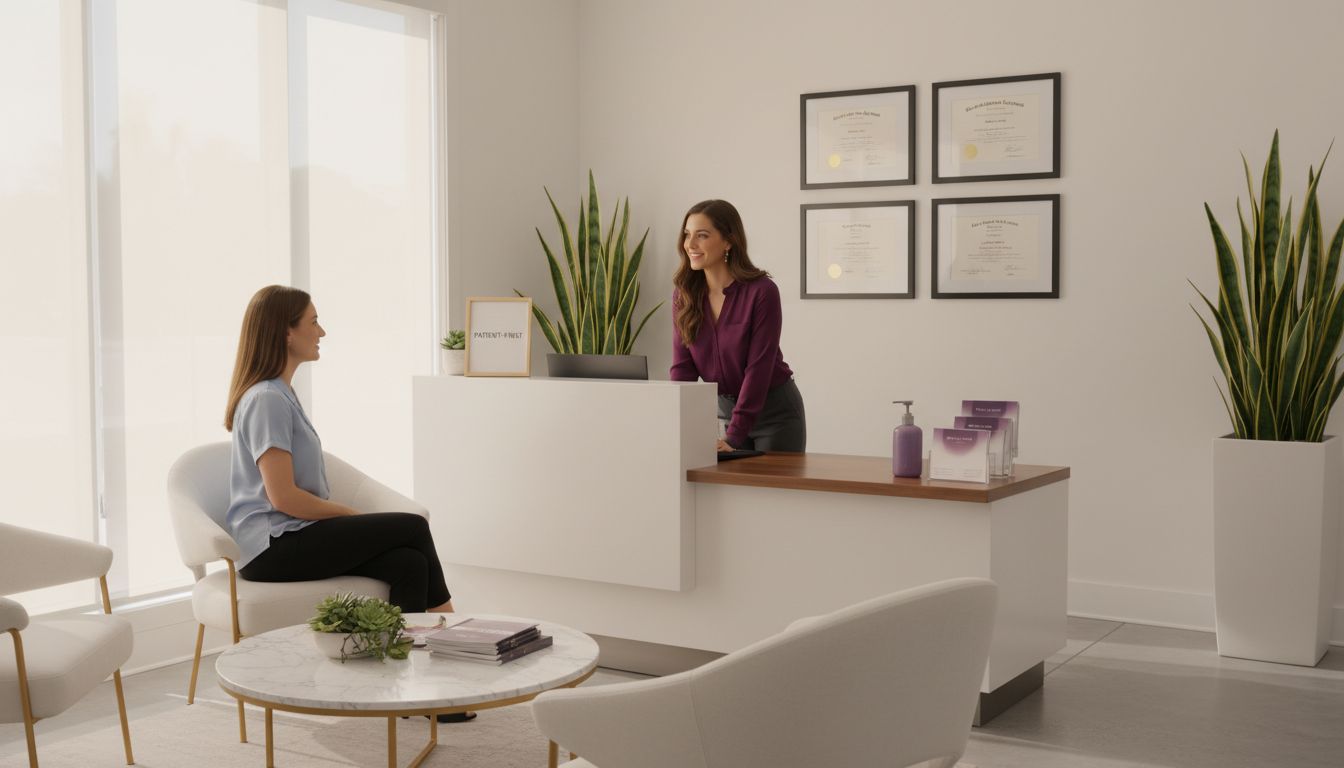Ever stared at the mirror, wondering if that stubborn belly fat could just… disappear without a knife?
We’ve all been there – you’ve tried diet tweaks, endless cardio, maybe even those trendy waist‑cinch gadgets, and yet the curve refuses to budge. It’s frustrating, right?
Enter the debate that’s been buzzing in every spa hallway and online forum: coolsculpting vs liposuction. One promises a frosty, non‑invasive freeze, the other a classic surgical carve. Which one actually fits your lifestyle, budget, and comfort level?
Before we dive into the nitty‑gritty, let’s acknowledge the emotional rollercoaster. You’re probably juggling the fear of scars, the dread of anesthesia, and the hope of finally seeing that smooth silhouette you’ve imagined for years.
So, what does each option really involve? Coolsculpting uses controlled cooling to crystallize fat cells, which your body then naturally eliminates over weeks. Liposuction, on the other hand, physically suctions out the fat through tiny incisions, delivering immediate results but also a recovery period.
Think about it way: if you’re looking for a low‑downtime, “set it and forget it” approach, the freezer might feel like a dream. But if you crave a dramatic, one‑time reshaping and don’t mind a few days of bruising, the surgical route could be your ticket.
And here’s the part that often gets glossed over – the long‑term maintenance. Neither method magically prevents future weight gain, but the way each treats your tissue can affect how your skin bounces back.
In the coming sections we’ll break down cost, recovery time, results timeline, and even the subtle differences in how your body feels after each procedure. By the end, you’ll have a clear, personal roadmap to decide which path aligns with your goals.
Ready to demystify the hype and make an informed choice? Let’s dive in and explore the real pros and cons of coolsculpting vs liposuction, so you can move forward with confidence.
TL;DR
If you want a quick, low‑downtime way to melt stubborn fat, CoolSculpting offers a non‑invasive freeze that gradually fades away without surgery. If you crave immediate, significant dramatic reshaping and don’t mind a short recovery, liposuction delivers instant results, but it involves incisions, anesthesia, and a few days of bruising.
What is CoolSculpting and How Does It Work?
Picture this: you’re sitting in a comfy chair, a gentle cooling wand glides over the area you’ve always wished would smooth out, and you feel a subtle pull like a cold breeze. That, in a nutshell, is CoolSculpting – a non‑surgical, FDA‑cleared method that targets stubborn fat by freezing it.
But how does a simple chill turn fat into a memory? The magic lies in a process called cryolipolysis. When the skin’s surface is cooled to a temperature that’s uncomfortable for fat cells but safe for surrounding tissue, those fat cells crystallise. Your body recognises the frozen cells as foreign and, over the next 3‑4 weeks, sends macrophages to the rescue. These immune cells break down the dead fat and gently ship the remnants away through the lymphatic system.
In practice, a CoolSculpting session usually lasts 35‑60 minutes per treated zone. The device’s applicator creates a vacuum that pulls the skin into the cooling panel, ensuring even contact. You’ll feel a tug, then a numbness, and finally a faint tingling as the temperature drops. Most people describe the sensation as “a tight, icy massage.”
Why the Freeze Works (and Doesn’t Harm You)
Fat cells are more vulnerable to cold than skin, nerves, or muscle. That’s why the controlled cooling can selectively destroy fat without damaging the outer layers. Think of it like an ice cube melting in a glass of water – the water (your skin) stays liquid while the ice (fat) disappears.
After the procedure, you might notice some redness, swelling, or a bruised‑like hue. Those are normal, temporary signs that your body is processing the dead cells. Most clients report a return to normal activities right away – no downtime, no stitches, just a little extra confidence.
Here’s a quick visual of what the treatment looks like in the clinic:
And because we love a good visual cue, imagine a before‑and‑after photo gallery where each picture tells a story of gradual, natural‑looking reduction. That’s the hallmark of CoolSculpting – results that appear over weeks, not overnight, giving your skin time to tighten naturally.
What to Expect Before Your First Session
First, a consultation at Simcoe Cosmetic Clinic. The practitioner will map out which areas are best suited – love handles, double chin, flanks, or even the underside of the arms. They’ll measure your thickness, discuss your goals, and set realistic expectations. If you have a medical condition (like cold urticaria) or are pregnant, they’ll let you know whether CoolSculpting is the right choice.
On the day of treatment, you’ll change into a modest gown, and the tech will mark the target zones. The applicator is positioned, the suction engages, and the cooling cycle begins. You can bring a book, scroll on your phone, or just close your eyes and relax. Some people even nap!
After the session, the practitioner will massage the treated area briefly. This helps break up the crystallised fat and can improve the contouring effect. Then you’re free to go – maybe grab a coffee, hit the gym, or simply enjoy the fact that you didn’t have to schedule a week off.
One of the biggest questions people ask is, “Will I see results right away?” The answer is a gentle no. The first noticeable change typically appears around the three‑week mark, with optimal results showing up at 2‑3 months. Patience is key, but the payoff is a smooth, natural look that isn’t the result of a surgical scrape.
So, if you’ve been wrestling with that stubborn pocket of fat and you dread the idea of anesthesia, incisions, or a recovery period, CoolSculpting offers a low‑risk alternative that fits into a busy schedule.
Here’s a quick checklist to see if CoolSculpting feels right for you:
- You have localized fat that hasn’t budged despite diet and exercise.
- You prefer a non‑invasive approach with minimal downtime.
- You’re comfortable with gradual results over weeks.
- You have realistic expectations about the amount of fat that can be removed in a single session.
If you tick most of those boxes, it’s worth booking a consultation at Simcoe Cosmetic Clinic to see how the “freeze” could fit into your body‑contouring plan.
Ready to feel the chill and watch the fat melt away?
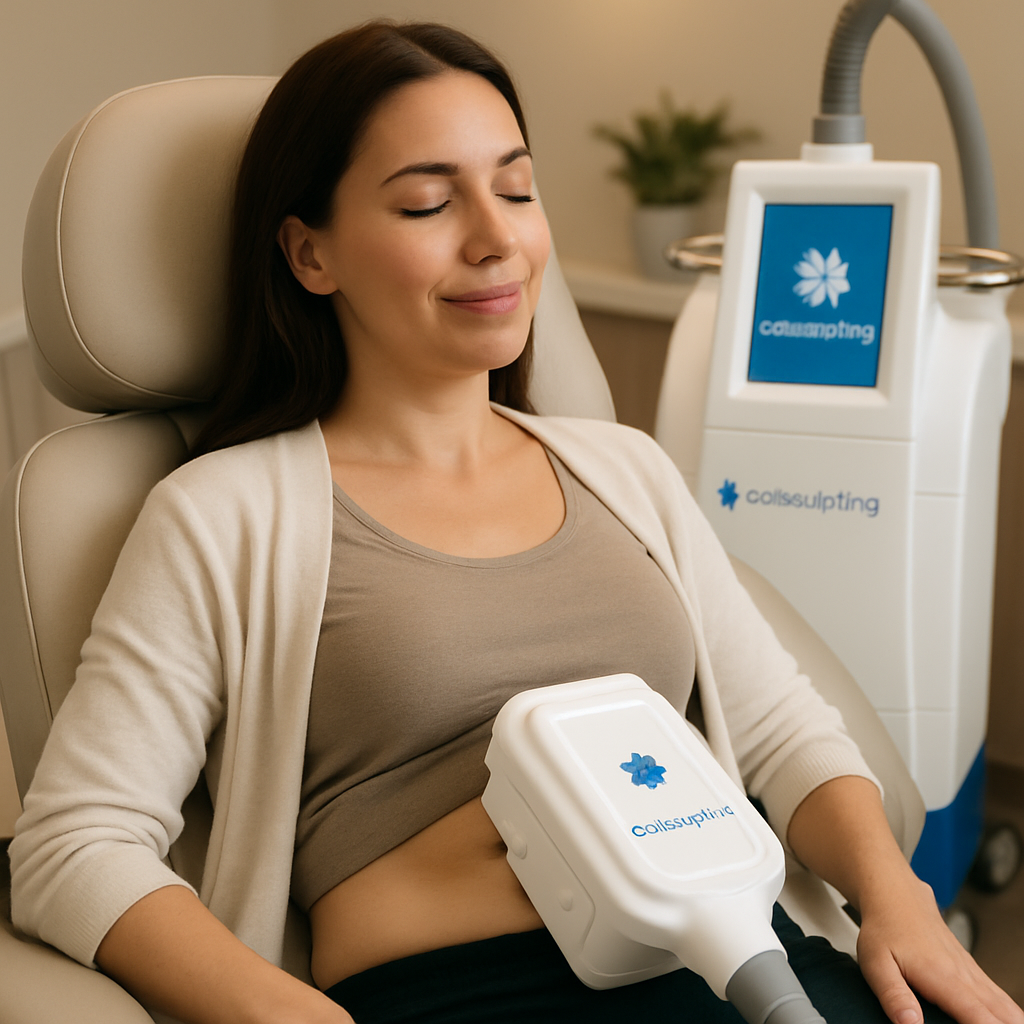
What is Liposuction and How Does It Work?
If you’ve ever imagined a surgeon with a tiny vacuum hose gently pulling out those stubborn love‑handles, you’re pretty close to what liposuction actually does.
Liposuction is a surgical body‑contouring technique that physically removes fat cells from targeted areas, giving you an immediate change in shape.
The magic starts with anesthesia—most patients are under either local sedation or a short general anesthetic, so you stay comfortable while the surgeon does the heavy lifting.
Next, the surgeon makes a small incision, usually less than half an inch, in a discreet spot near the treatment zone. This tiny opening is the gateway for everything that follows.
Through that opening, a thin cannula—think of it as a miniature straw—gets inserted. The cannula is attached to a suction device that gently pulls the loosened fat out of your body.
Types of Liposuction
There are three main ways the cannula can work, each with its own vibe.
Tumescent liposuction is the workhorse. A chilled saline solution laced with lidocaine and epinephrine floods the area, numbing you and shrinking blood vessels. This makes the fat easier to break up and reduces bleeding.
Ultrasonic‑assisted liposuction (UAL) adds sound waves that vibrate the fat cells, turning them into a liquid‑like mush before suction. It’s handy for denser pockets, like the upper back or chin.
Laser‑assisted liposuction (LAL) uses a thin laser fiber to melt fat and stimulate collagen at the same time, which can give a tighter skin finish, especially on the neck and jawline.
Regardless of the technique, the goal is the same: break up the fat cells and suction them out, leaving a smoother contour.
How the Procedure Unfolds
Because the skin is stretched during the procedure, many people notice a tightening effect afterward, especially when the underlying fat is removed. The surgeon will massage the area briefly before closing the incision with a few stitches or surgical glue.
But what about downtime? Most folks can go home the same day, though you’ll need someone to drive you if you had general anesthesia.
Swelling and bruising are the most common side effects, and they usually peak around day three. You’ll be given a compression garment to wear for a week or two, which helps the skin hug the new shape and eases fluid buildup.
Recovery tip: Keep the garment on as instructed, stay hydrated, and take short walks. Gentle movement speeds up circulation and reduces lingering edema.
When you look in the mirror a week or two after, the area may still look a bit puffy—that’s normal. The final silhouette becomes clearer as the swelling subsides, typically between six and eight weeks.
Full results usually settle in within 2‑3 months, when the skin has fully readjusted and any residual fluid is gone. At that point you’ll see a lasting reduction in the number of fat cells, meaning the shape stays consistent as long as you maintain a stable weight.
Recovery and Results Timeline
So, how does this compare to CoolSculpting? The biggest difference is immediacy: liposuction gives you a dramatic change right after the surgery, whereas CoolSculpting is a gradual, non‑invasive process that can take months to show its full effect.
Another contrast is the invasiveness. Liposuction involves incisions, anesthesia, and a recovery period, while CoolSculpting merely cools the fat and lets your body do the work.
Finally, think about the amount of fat you want removed. Liposuction can take several centimeters of fat in one go, making it ideal for larger contouring projects. CoolSculpting is best for smaller, stubborn pockets that haven’t responded to diet or exercise.
So, what should you keep in mind when deciding if liposuction is right for you? Ask yourself:
- Do I want an immediate, noticeable change?
- Am I comfortable with a short recovery and possible bruising?
- Is the area I’m targeting large enough to benefit from a surgical approach?
If the answers line up, a consultation at Simcoe Cosmetic Clinic can map out the best technique for your goals and give you a realistic picture of what to expect.
CoolSculpting vs Liposuction: Side‑by‑Side Comparison
Alright, let’s get real about the showdown between coolsculpting vs liposuction. If you’ve ever stood in front of the mirror wondering which route feels less like a horror movie and more like a confidence boost, you’re in the right spot.
Procedure Overview
CoolSculpting is basically a controlled chill. A vacuum pulls your skin into a applicator, drops the temperature, and lets your body naturally dissolve the frozen fat cells over weeks. No cuts, no anesthesia, just a few minutes of “hey, this feels a bit icy.”
Liposuction, on the other hand, is a surgical carve. A tiny incision lets a cannula suction out fat while you’re under local or general anesthesia. The surgeon literally scrapes away the excess, giving you an immediate shape change.
Pain & Downtime
After coolsculpting you might feel a brief tingling, then maybe some redness that fades in a day or two. Most folks get back to work the same afternoon – coffee, emails, maybe a quick walk.
Liposuction brings the classic “post‑op” package: soreness, bruising, and a compression garment you’ll wear for a week or two. You’ll need someone to drive you home if you went under general anesthesia, and you’ll likely skip the gym for a few days.
Results Timeline
With coolsculpting, the magic starts around three weeks, peaks at two to three months, and the final look steadies around six months. It’s a gradual reveal, kind of like watching a sunrise.
Liposuction delivers a dramatic “wow” right after the bandages come off. Swelling subsides over six to eight weeks, and the final contour usually settles by three months. You see the change almost instantly, but the skin still needs time to tighten.
Ideal Candidates
If you have a small, stubborn pocket of fat that’s resisted diet and you value zero‑downtime, coolsculpting is often the sweet spot. Think love handles, a double chin, or a few extra inches on the thighs.
If you’re dealing with a larger volume – say, a whole abdomen, hips, or multiple areas at once – and you don’t mind a short recovery, liposuction can sculpt those curves in a single session.
Cost Considerations
Coolsculpting pricing usually runs per treatment zone, so the total can add up if you need multiple sessions. It’s an out‑of‑pocket expense, but many folks appreciate the lack of anesthesia fees.
Liposuction often has a higher upfront price because you’re paying for the OR time, anesthesia, and the surgeon’s expertise. However, you might need fewer follow‑up visits compared to a series of coolsculpting appointments.
So, how do you decide which path feels right for you? Grab a pen and jot down these quick check‑boxes:
- Do I want results now or am I okay waiting a few months?
- Can I take a few days off work for recovery?
- Is the area I’m targeting small (coolsculpting) or large (liposuction)?
- Am I comfortable with needles, anesthesia, and a compression garment?
Answering honestly will point you toward the method that aligns with your lifestyle, budget, and patience level. And remember, a consultation at Simcoe Cosmetic Clinic can give you a personalized map – no guesswork, just a clear road ahead.
| Factor | CoolSculpting | Liposuction |
|---|---|---|
| Invasiveness | Non‑invasive, no incisions | Surgical, small incisions |
| Downtime | Same‑day return to activities | 1‑2 weeks of limited activity |
| Result Speed | Gradual (3‑12 weeks) | Immediate, final by 3 months |
| Best for | Small, localized fat pockets | Larger volume contouring |
| Typical Cost | Per zone, may need multiple sessions | One‑time higher fee (OR, anesthesia) |
Practical Tips to Maximize Your Results
Whatever you choose, a few simple habits can boost the outcome. Stay hydrated – water helps your lymphatic system flush out the broken‑down fat after coolsculpting and reduces swelling post‑liposuction. Light cardio and gentle stretching keep circulation moving, which speeds up healing and keeps the newly‑contoured area firm.
A balanced diet rich in protein supports tissue repair, especially important after the surgical scrape of liposuction. And don’t skip the compression garment if your surgeon recommends one; it’s not just for comfort, it actually helps the skin conform to its new shape.
Finally, schedule a follow‑up appointment. The clinic will check your progress, answer any lingering questions, and fine‑tune a maintenance plan so the results stay with you long‑term.
Bottom line? Both coolsculpting vs liposuction have their own strengths. Pick the one that matches how fast you want to see change, how much downtime you can tolerate, and the size of the area you’re targeting. Either way, you’re one step closer to the smoother silhouette you’ve been picturing.
How to Decide Between CoolSculpting and Liposuction
Step 1: Define Your Desired Timeline
First thing’s first – ask yourself how fast you want to see a change. If you can wait a few weeks for a subtle, natural‑looking fade, the freezer‑tech of CoolSculpting fits the bill. If you need the shape to be obvious right after the procedure, liposuction delivers that instant “wow” factor.
Does the idea of watching a transformation unfold like a sunrise excite you, or would you rather flip a switch and see the result immediately? Your answer sets the stage for everything else.
Step 2: Size Up the Area
Next, take a good look at the problem zone. Small, stubborn pockets – think love handles, a double chin, or a few extra inches on the thighs – are perfect candidates for CoolSculpting because the device works zone‑by‑zone.
On the flip side, if you’re dealing with a larger volume – an entire abdomen, hips, or multiple areas at once – liposuction can remove several centimeters of fat in a single session, giving you a more dramatic contour.
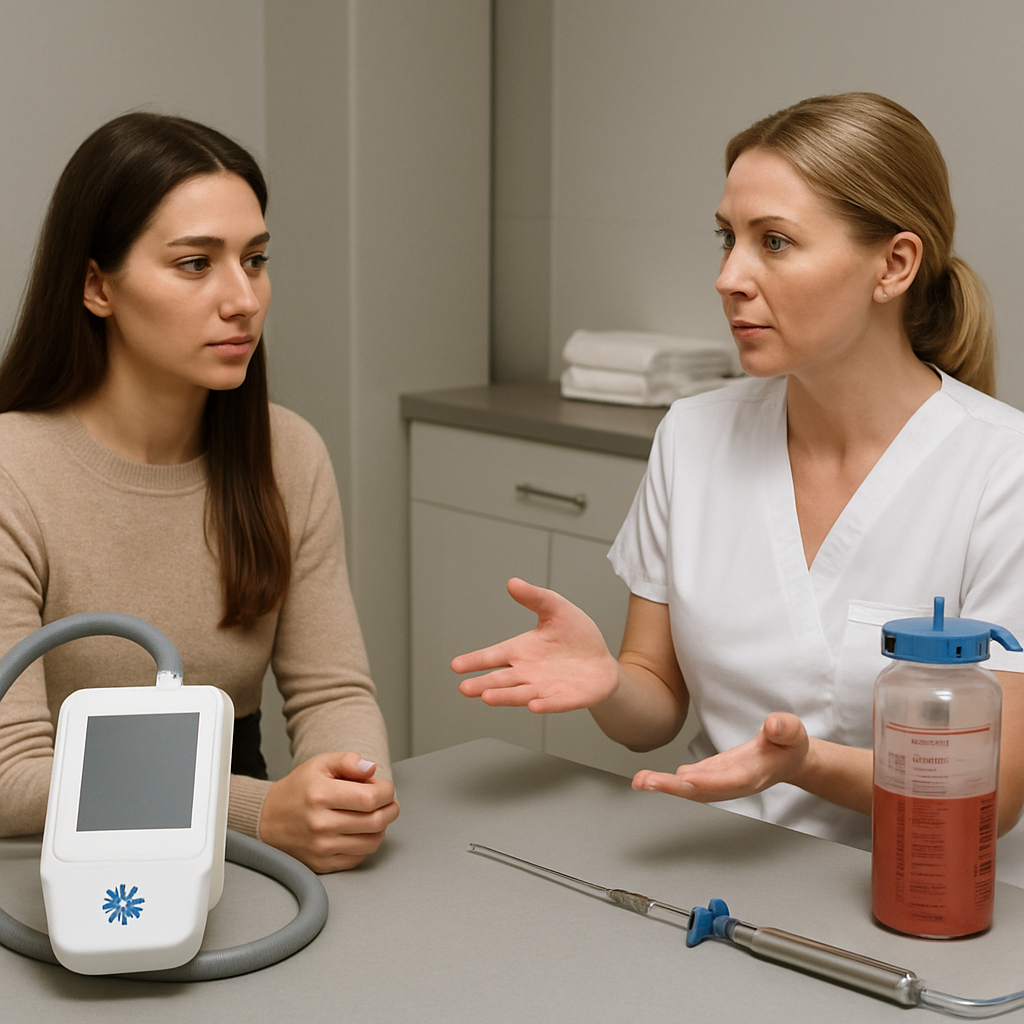
Step 3: Gauge Your Tolerance for Downtime
Think about your schedule. Do you have a week off work, or do you need to be back on your feet the same day? CoolSculpting is essentially a lunch‑break appointment – you might feel a brief tingling, then you’re good to go.
Liposuction, even with the smallest incisions, brings the classic post‑op package: soreness, bruising, and a compression garment for a week or two. You’ll also need someone to drive you home if you’re under general anesthesia.
Step 4: Talk Money
Cost is another reality check. CoolSculpting is priced per zone, so multiple sessions can add up, but there are no OR or anesthesia fees. Liposuction usually carries a higher upfront price because you’re paying for the operating room, the surgeon’s time, and any anesthesia.
Write down your budget, then compare the total estimate for the number of CoolSculpting sessions you’d need versus a single liposuction case. That number often tells you which route is financially realistic.
Step 5: Check Your Health Profile
Any medical red flags? If you have cold‑urticaria, certain skin conditions, or are pregnant, CoolSculpting might be off‑limits. Conversely, if you have poor wound‑healing, uncontrolled diabetes, or are on blood thinners, the surgical route could pose extra risk.
Always bring a full health history to your consultation – the clinician can flag which method aligns with your safety profile.
Step 6: Get a Personalized Consultation
The final piece of the puzzle is a face‑to‑face (or video) meeting with a qualified provider. During that talk, you’ll get a realistic picture of how many CoolSculpting cycles you’d need, what the liposuction incision sites will look like, and what the after‑care plan involves.
For a deeper dive into what body‑contouring options look like in Barrie, check out Understanding Body Contouring in Barrie: Procedures, Benefits, and What to Expect. That guide walks you through the whole decision‑making process and helps you ask the right questions.
Bottom line? Write down your answers to these six steps, compare them side‑by‑side, and let the facts speak louder than the hype. When you’ve matched your timeline, area size, downtime tolerance, budget, health, and professional advice, the choice between CoolSculpting and liposuction becomes crystal clear. And whichever path you pick, you’ll be one step closer to the smoother silhouette you’ve been daydreaming about.
Risks, Recovery, and Long‑Term Results
Okay, so you’ve narrowed down whether coolsculpting vs liposuction feels like the right match for your goals. Before you book that appointment, let’s talk about the stuff that usually hides behind the glossy before‑and‑after photos – the risks, the recovery grind, and what the results look like years down the line.
What Could Go Wrong?
First off, every procedure has a risk profile, and both sides of the coin have their own quirks.
CoolSculpting is non‑invasive, so you won’t see any cuts or stitches. Still, you might feel temporary numbness, redness, or a tingling “pins‑and‑needles” sensation that can last a few days. In rare cases, people report paradoxical adipose hyperplasia – a fancy way of saying the treated area actually gets a little bigger. It’s uncommon, but worth knowing.
Liposuction, being a surgical option, brings the classic surgery‑related risks: bruising, swelling, infection, and the occasional contour irregularity if the surgeon removes too much or too little fat. If you’re on blood thinners or have diabetes that’s hard to control, your wound‑healing could be slower, and you’d want to flag that early.
So, does one sound scarier than the other? It depends on your health, the area you’re treating, and how comfortable you are with a needle‑and‑incision scenario versus a cold‑sensation session.
Recovery Real Talk
CoolSculpting recovery is basically a “back to your day” plan. Most folks walk out of the clinic, maybe apply a soothing gel, and head straight to their next meeting. You might notice some swelling that eases within 48 hours, and that’s normal. The key tip? Keep moving – gentle walks help your lymphatic system flush out the dead fat cells faster.
Liposuction recovery is a bit more involved. You’ll probably have a compression garment on for one to two weeks. Expect some soreness and bruising that peaks around day three. Most people can return to light activities after a few days, but heavy lifting or intense cardio should wait at least two weeks. Gentle walks and staying hydrated are your best friends during this phase.
Here’s a quick checklist to keep you on track:
- CoolSculpting: apply cool compresses if you feel extra swelling, stay upright, and drink plenty of water.
- Liposuction: wear the garment as prescribed, keep the incision sites clean, and avoid sitting directly on them for the first week.
Long‑Term Results: What to Expect Years Later
Both treatments permanently remove fat cells from the treated zone, which means you won’t see the same amount of fat re‑accumulating there – as long as you maintain a stable weight. The difference shows up in how the skin behaves.
With CoolSculpting, the skin has time to contract gradually as the fat disappears. If you have good skin elasticity (think younger skin or a smaller treatment area), you’ll likely end up with a smooth, natural‑looking contour that stays stable for years.
Liposuction often gives a tighter skin “rebound” because the tissue is stretched during the procedure and then released. In many cases, especially on the abdomen or thighs, the skin can feel firmer right away. However, if you have lax skin to begin with, you might notice some sagging over time, which sometimes calls for an additional skin‑tightening session.
Maintenance is the real secret sauce. No matter which route you pick, staying active, eating a balanced diet, and watching weight fluctuations will help preserve your new shape. Think of it like caring for a garden – the initial planting (the procedure) sets the stage, but regular watering (healthy habits) keeps it thriving.
Bottom‑Line Tips for a Smooth Journey
1. Ask your provider about your specific risk factors – they’ll tailor the protocol to your health profile.
2. Follow post‑treatment instructions to the letter; skipping the compression garment after liposuction can delay healing.
3. Schedule a follow‑up appointment. A quick check‑in lets the clinic catch any lingering swelling or unexpected changes early.
4. Plan for a “maintenance window” – set a reminder to reassess your body composition every six months. If you notice a new pocket of fat, a quick coolsculpting touch‑up can keep the overall silhouette harmonious.
5. Stay realistic. Both coolsculpting vs liposuction can give you a noticeable improvement, but they’re not a magic weight‑loss solution. Think of them as sculpting tools, not diet replacements.
Bottom line? The risks are manageable, the recovery can be navigated with a little planning, and the long‑term results can last for years if you treat your body kindly after the procedure.

FAQ
What’s the biggest difference between coolsculpting and liposuction?
Coolsculpting is a non‑invasive freeze that gradually kills fat cells, so you walk out the same day and see changes over weeks. Liposuction is a surgical carve that physically suctions the fat out, giving you an almost immediate shape but also a short recovery period with bruising and a compression garment. Because the process is gradual, you also get a chance to see how your skin tightens naturally over time.
How long does the downtime really feel like for each treatment?
After coolsculpting you can usually get back to work within a couple of hours – maybe a mild redness that fades by tomorrow. Liposuction typically means taking a day or two off, wearing a snug garment for a week or two, and avoiding heavy lifting for about two weeks while the swelling settles. Most people report feeling back to normal activities by the next evening, which makes it easy to fit into a busy schedule.
Will I get any scars from coolsculpting or liposuction?
Coolsculpting leaves no incisions, so there’s no scar to worry about; you might notice a faint temporary mark from the suction cup, but it disappears. Liposuction uses tiny incisions (often less than a half‑inch) that are closed with stitches or surgical glue, so a small scar can remain, though most people find it fades well with proper after‑care. A simple scar care routine—cleaning gently and applying silicone gel—can further reduce its visibility.
Which option is better for a small stubborn love‑handle?
If the area is just a few inches of fat that hasn’t budged with diet and exercise, coolsculpting is usually the sweet spot. The device can target that pocket zone‑by‑zone, and you won’t have to schedule a day off. Liposuction can handle it too, but you’ll be paying for a surgical suite and recovery for a relatively small gain.
Can I combine coolsculpting and liposuction in the same year?
Yes, many people start with coolsculpting to fine‑tune smaller problem areas and then move to liposuction for larger volume reshaping later on. Just give your body a few months to fully heal from the first procedure and discuss a staged plan with your clinician so the treatments complement rather than conflict. You’ll also have time to evaluate the first results and decide if additional sculpting is needed.
How do the costs usually compare?
Coolsculpting is priced per treatment zone, so a single session might be modest, but you may need several rounds to reach your goal, which adds up. Liposuction has a higher upfront price because you’re paying for the operating room, anesthesia and the surgeon’s time, but it often requires only one session to achieve the desired contour. Ask your provider about financing options, as many clinics spread the cost over several months.
What should I do to keep results looking great after either procedure?
Maintain a steady weight, stay active, and hydrate plenty – think of your body like a garden that needs regular watering. For coolsculpting, keep moving with light cardio to help the lymphatic system flush out the dead fat cells. For liposuction, wear the compression garment as instructed, do gentle walks, and follow any massage recommendations your surgeon gives you.
Conclusion
After sifting through the pros and cons of coolsculpting vs liposuction, you’ve probably felt that familiar mix of excitement and uncertainty.
Here’s the short version: if you crave a zero‑downtime, gradual fade and you’re happy waiting a few months, the freezer‑tech is probably your best friend. If you need an immediate shape change, have a larger area to tackle, and can spare a short recovery, liposuction delivers that “wow” moment in one go.
So, what’s the next step? Grab a notebook, list your timeline, budget, and how much downtime you can afford. Then schedule a chat with the team at Simcoe Cosmetic Clinic – they’ll map out a personalized plan, answer lingering questions, and even show you real before‑and‑after photos.
Remember, both treatments permanently remove fat cells, but long‑term success still hinges on healthy habits. Think of your body like a garden: the procedure plants the seed, but regular watering (balanced diet, movement) keeps it thriving.
Ready to turn that vision into reality? Give us a call or book an online consultation today, and let’s sculpt the confidence you deserve.
Whether you choose the gentle chill of coolsculpting or the precise sculpting of liposuction, the journey starts with a single conversation. We’re here to guide you every step of the way.

